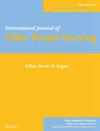To develop and validate an evidence-based home pursed lip breathing (PLB) intervention protocol for improving related health outcomes (e.g., dyspnea and exercise capability) in patients with chronic obstructive pulmonary disease (COPD) and to present a detailed intervention development process.
This home PLB intervention protocol employed phase one of the Medical Research Council (MRC) Framework for Developing and Evaluating Complex Interventions to guide the development process of the PLB intervention. We searched for research evidence on 5 July 2023 from several databases, including PubMed, Embase (via Ovid), Cochrane Library, Google Scholar and China Biology Medicine Disk (CBM). Using the content validity index, a panel of experts assessed the appropriateness of the PLB protocol.
We developed the preliminary home PLB intervention protocol on the basis of several underlying rationales, which encompass the extension of expiration time, enhancement of respiratory muscle strength, augmentation of tidal volume and integration of the most reliable research evidence obtained from four systematic reviews, five RCTs, five clinical trials, and 10 recommendations. We structured the PLB intervention with a designated time ratio of inspiration to expiration, set at 1:2. Additionally, this study recommends that the training parameters of the PLB intervention were as follows: three sessions per day, each lasting for 10 min, over 8 weeks. Individualised PLB training intensity adjusted the inhalation component according to each participant's tolerance level while emphasising the exhalation phase to ensure the complete expulsion of air from the lungs. The home PLB intervention protocol established strong content validity through consensus, which was reached among all panel experts. The item-level and scale-level content validity indices (CVIs) reached a maximum score of 1.0, indicating a high level of agreement and credibility in the protocol's content as evaluated by the expert panel.
An optimal evidence-based home PLB protocol has been adapted and developed to manage health-related outcomes of patients with COPD. The protocol is transparent and fully supported by relevant mechanisms, concrete evidence, recommendations and experts' consensus.
In this study, we consulted patients with COPD about the ‘Prepared Conditions Before PLB Practice’, to ensure appropriate measures to prevent patients with COPD from potential risks. In addition, patients with COPD also contributed to the PLB exercise frequency distribution.


